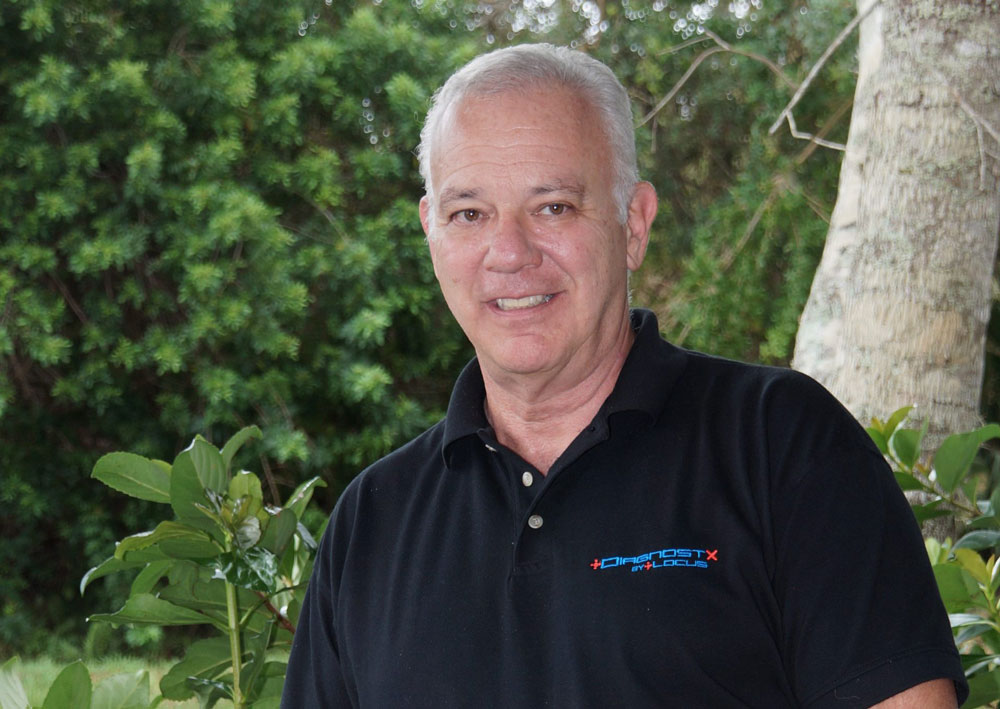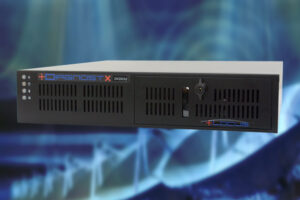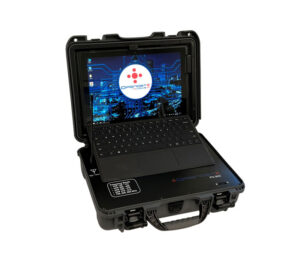By Ken Datzman, Brevard Business News
Seven years ago, LocusUSA, an entrepreneurial–driven engineering and software–development company in West Melbourne, introduced its patented radio–diagnostics tool at the 33rd annual International Wireless Communications Exposition in Las Vegas.
And sales soon took off around the nation in the public–safety and public– service markets, including law–enforcement departments. LocusUSA sells to municipal, county, and state governments, and is looking to expand further into the federal sector.
“Our sales have grown impressively since we first launched the ‘DiagnostX’ product,” said businessman Joseph Rey, LocusUSA’s managing partner.
“The product is now all over the United States and in Canada as well. The Canadian National Police use it. The Office of Unified Communications in Washington, D.C., uses it (for both emergency and non–emergency calls). We have users all over Florida, Georgia, South Carolina, North Carolina, Maryland, Virginia, and on and on. The technology sells itself.”
His company just received a purchase order for roughly $300,000 from the state of Ohio. “This is likely the beginning of a build-out for the state of Ohio. They are going to start with eight of our units. And we have the capability of networking them.”
The DiagnostX tool — an over–the–air waveform analyzer — can identify radios that need service. Some 15 to 20 percent of radios drift out of alignment each year, causing them to fail at any time. This presents a dire risk for public–safety professionals and first responders in the field.
“Eventually, a radio that is not aligned is going to catch up with you. When you need that radio the most, it’s the one time it’s going to fail, because you waited too long to maintain it,” Rey said.
LocusUSA, which holds seven U.S. patents, three Australian patents, and one Canadian patent, is a leader in the area of radio frequency capture for radio analysis and location and is known for its research in that niche.
The company’s core product “DiagnostX,” is a cutting–edge system that measures the alignment and field performance of portable and mobile radios, over–the–air in real–time “without user intervention,” thus ensuring the optimal performance of a radio system, said Rey.
It enables public–safety agencies to identify which of their radios are working properly, and the ones that need to be brought in for immediate service.
Several large metropolitan areas in the United States are already using DiagnostX. They range from Seattle to Washington, D.C., to San Diego and Orlando, with statewide systems in development as well.
“The unit saved us 250 man–hours in the first week,” said Chris Pandolfi, a communications specialist with the City of Tallahassee in Leon County, which was the first purchaser of the unit in Florida, after it was beta–tested in the state.
This unique technology is “non– intrusive” to a radio system and can be networked to provide systemwide coverage, said Rey, who travels the state extensively meeting with government officials and others explaining the advantages of DiagnostX.
Cost–cutting isn’t the only benefit derived from DiagnostX. The ability to determine whether communication problems are specifically due to a faulty radio or a problem on the network means fewer issues between the users and dispatch. Rey said this is a big advantage for agencies that are located in rural or mountainous areas where coverage can be spotty.
The system has made quite an impression on the City of Colorado Springs since it was installed to monitor the Pikes Peak Regional Communications Network.
“Servicing all the radios in the system is immensely time–consuming,” said Randy Bell, the former communications manager for the city’s Department of Information Technology Communications, which oversees maintenance of more than 5,500 radios in the network.
“I estimate that it would take two people three months of every year to go out into the field and check every radio. It also inconveniences the radio user. DiagnostX is another tool that has helped us do more with less.”
DiagnostX has proven to be a “powerful tool,” ensuring that police, fire, and emergency medical service workers can feel confident their radios will function properly whenever they are needed.
The key to long-running radio performance is “proactive maintenance. When you have a diligent manager of communications who understands what the product does and how effective it is, they immediately buy it. And that is why DiagnostX sells so well in the government markets,” said Rey, a City University of New York graduate.
He added, “When the radios are well–tuned, the whole communications center runs better. Out–of–tune radios create havoc every day for government entities.”
Founded in 2001, LocusUSA is set to roll out a new service feature for DiagnostX, Rey said. The product launch is scheduled for January.
“DiagnostX wasn’t originally designed as a service model. It was always for capital purchase. But we are now offering it as a service model. And we are hoping the service component will break through in the government market,” he said.
Rey continued, “LocusUSA will come and install the devices, read all the radios, and produce a report for the customer. We will do a comprehensive scan of all the radios, and identify the ones that need service and verify the ones that are within spec.”
“DiagnostX: An Over–the–Air Radio Analyzer Service” will enable land mobile radio managers to have their active radios evaluated for performance and alignment.
LocusUSA will provide the monitoring equipment and manage the data from its Network Operations Center. Once the scans have been completed, a full report will be sent to the customer showing the “alignment characteristic by radio ID.”
The “detailed monthly report” will pinpoint the radios that have “failed,” have “passed,” or “never received,” based on customer-defined thresholds, said Rey, who in January will be moving his company platform into the “cloud,” a term that refers to cloud computing.
The new radio–analyzer service will support “P25 trunked, P25 conventional, and legacy radio systems.” It can be acquired with existing maintenance or operational funds, he said.
A trunked radio system is a two–way radio system that uses a control channel to automatically direct radio traffic. These two–way systems are either trunked or conventional. The latter is manually directed by the radio user.
Rey said the benefits of his company’s new Over–the– Air Radio Analyzer Service include:
- It is a cost-effective way to identify radios in need of service, while well–aligned ones can remain deployed in the field.
- Ensures optimal system performance.
- Resolves the issue of whether it is the network or the subscriber radios at fault.
- It is a non–intrusive, proactive radio maintenance management tool.
“It has been an accepted practice with LMR (land mobile radio) networks to check the alignment of each radio annually,” he said.
“Due to budget constraints, manpower shortages, and other logistical issues, many system managers postpone maintenance, while others take a ‘fix–it–when–it–fails’ approach. By measuring radios, long–range over–the– air, they are able to determine which radios need to be brought in for maintenance service, and which radios can remain in the field.”
For more information on LocusUSA or to register for a webinar at no charge, visit www.LocusUSA.com.
LocusUSA’s company president is Susan Jaramillo, who has an M.B.A. degree from the University of Chicago. She recently relocated to California from Florida. “We have ideas for jumping across the other pond — Southeast Asia,” said Rey. “It’s a very rich market for communications. We are in conversation about starting a marketing program targeting Europe, too.”
As the company looks to the future and better positions itself with new offerings, LocusUSA recently moved to CIA Real Estate’s Woodland Business Park. Its new 6,000–square–foot complex has both warehouse space and assembly space.
“It’s going to work out just fine. The building is better configured to meet our work requirements. The electronics laboratory is perfect. We can move around comfortably within the lab. And our new location has an outdoor deck, which will be great for staff gatherings.”
He added, “We’re looking forward to 2018. We think it’s going to be a good year for our company. More state governments, including Florida, are learning of and asking us about the DiagnostX technology. We are on the verge of a new growth wave.”




